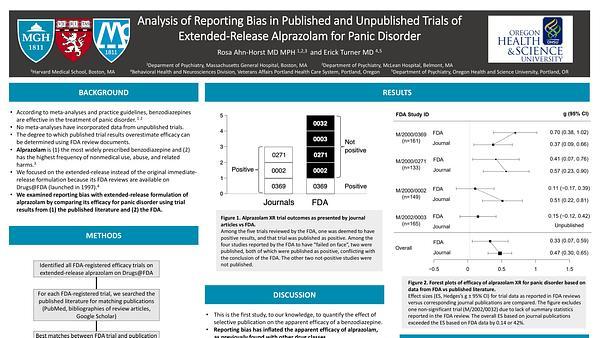Would you like to see your presentation here, made available to a global audience of researchers?
Add your own presentation or have us affordably record your next conference.
keywords:
publication
bias
Objective To analyze the proportion of spin strategies present in randomized clinical trials (RCTs) published in high-impact journals appraised at low risk of bias.
Design For this cross-sectional study, a comprehensive search was made in Ovid MEDLINE, retrieving all RCTs published in the 10 highest-impact medical journals in medicine and surgery (by 2018 Journal Citation Reports impact factor) from January 1, 2018, to February 28, 2020. Stratified sampling was then performed of 150 articles, adjusted by journal. Then, the risk of bias of each RCT was assessed independently and in duplicate using the Cochrane risk-of-bias tool. For each included article, an adaptation of the classification scheme created by Boutron et al1 for RCTs was used to identify spin strategies in every section of the article.
Results A total of 46 RCTs at low risk of bias were appraised using the spin classification scheme. From those included in the analysis, 25 studies were published in internal or general medicine journals and 21 in surgery journals. The number of patients included in the RCTs ranged from 20 to 12,000. The most spin was identified in the discussion and conclusion sections, with the most common strategies being focusing on statistically significant secondary outcomes (4 8.7%), ruling out adverse events (4 8.7%), acknowledging statistically nonsignificant results for the primary outcome but emphasizing the beneficial effect of treatment (4 8.7%), and focusing only on statistically significant results (5 10.9%). In subgroup analyses, a total of 38 spin strategies were identified in studies with nonsignificant primary outcomes vs 11 in studies with significant results. Assessment according to specialty identified 35 spin strategies in surgery journals and 14 in internal medicine journals.
Conclusions Overall, the use of spin strategies was found to be more common in studies with a statistically nonsignificant primary outcome vs those with a significant primary outcome. This study highlights the need to raise awareness about the use of spin, even in studies published in high-impact journals and at low risk of bias, as the use of these strategies can affect readers’ decision-making.
Reference
- Boutron I, Dutton S, Ravaud P, Altman DG. Reporting and interpretation of randomized controlled trials with statistically nonsignificant results for primary outcomes. JAMA. 2010;303(20):2058-2064. doi:10.1001/jama.2010.651
Conflict of Interest Disclosures None reported.


